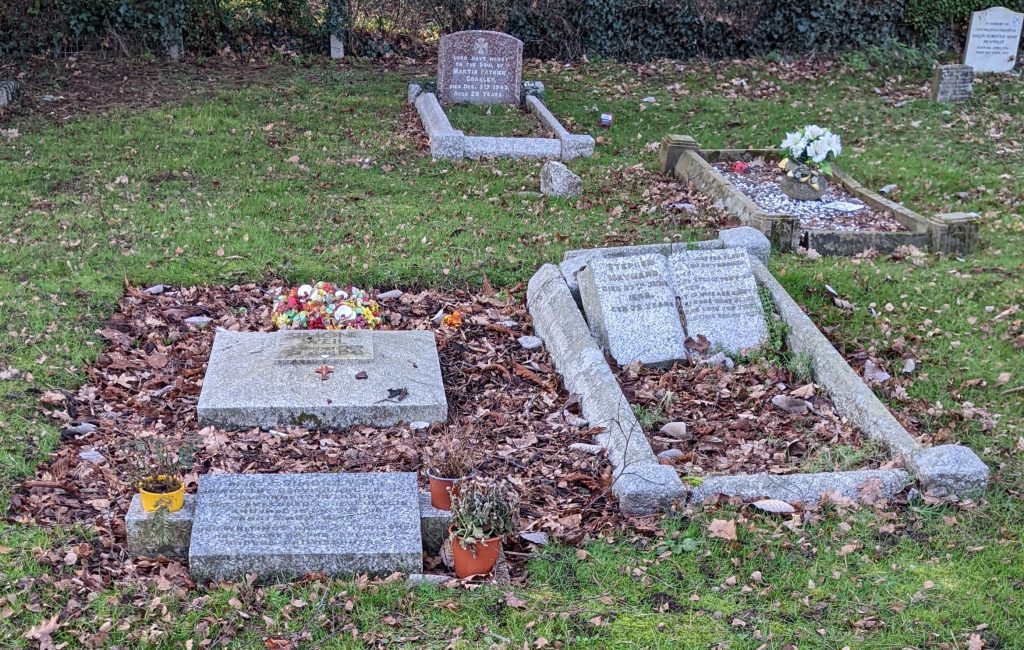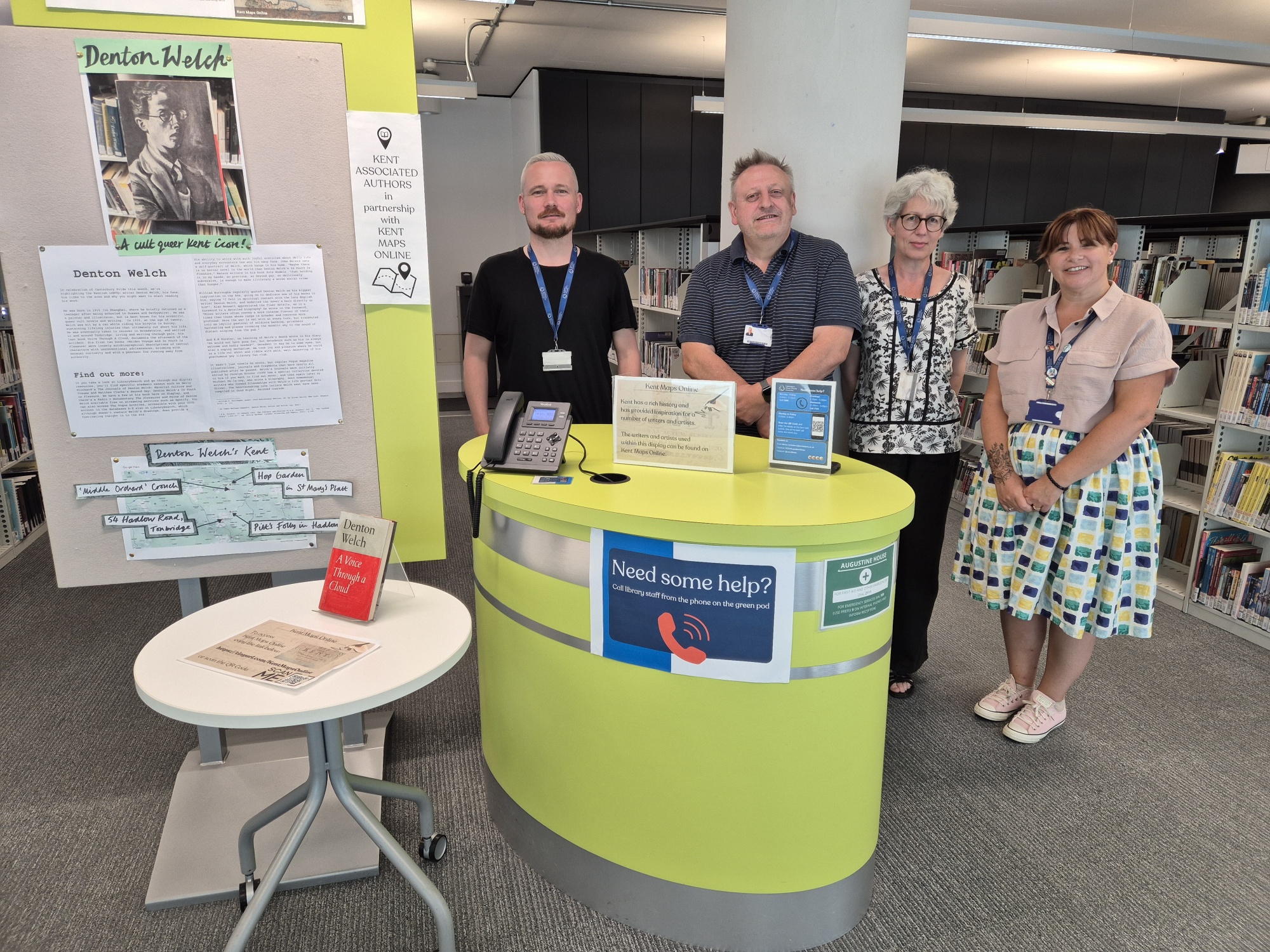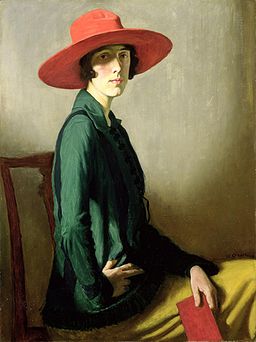Over the past eighteen months the library has featured local Kent authors in its book displays on floor 3. This initiative was the brilliant idea of Nick Berbiers, a PhD literature candidate, who, inspired by the Kent Maps Online project, has coordinated a fantastic offering along with colleagues Angela, Bob, Dom and Vicky in the User Experience Team. This month sees the last display in the series. In this blog post, the team will tell you about who they researched and what their biggest take aways were from the project.
Angela:
The opportunity to create a display about Vita Sackville-West was irresistible to me. Vita was completely rooted in the Kentish countryside, which she loved both for its natural beauty and the traditions it inspired. This began with her childhood at Knole near Sevenoaks, the ancestral family home which she was denied the opportunity to inherit purely because of being female. It continued until the end of her life with the world-famous garden she and her husband Harold Nicholson created at Sissinghurst in the Weald of Kent. I have long known and loved Sissinghurst, and I share her love of the Kentish countryside (and gardening!) but reading the recent biography ‘Behind the Mask: the life of Vita Sackville-West’ by Matthew Dennison (823.912 DEN) really opened-up Vita’s colourful life to me in a new way.
Lady with a Red Hat. Portrait of Vita Sackville-West by William Strang 1918 oil on canvas. Image credit: Glasgow Life Museums, licensed under CC BY-NC-ND
From having known her primarily as a gardener and garden writer, I discovered just what a prolific and versatile author Vita was, across many genres. Indeed, she considered herself first and foremost a poet, and in 1948 was a candidate for the post of poet-laureate. She published more than a dozen poetry collections, yet her poetry is the least known of her work. This discovery led me to find and enjoy two of her long poems on our shelves: ‘Sissinghurst’ (821 SAC) and ‘The Garden’ (821 SAC).
Whilst researching my display I took myself off to visit both Knole and Sissinghurst (always a joy and the opportunity to sample a National Trust cream tea was an additional lure!) to immerse myself in these locations that were so central to Vita’s life. Spotting the printing press on display at Sissinghurst led me to make discovery: The Letterpress Reimagined Project, a collaboration between CCCU’s International Centre for Victorian Women Writers and the National Trust.
Photo: A. Starey
The Minerva Printing Press on display at Sissinghurst. This press is thought to have been given by Virginia and Leonard Woolf as a house-warming present when Vita and Harold bought Sissinghurst in 1930.
CCCU experts Vicki Adams and Anna Fewster trained National Trust volunteers to reprint 100 copies of Vita’s poem ‘Sissinghurst’, using a replica of this Hogarth letterpress. With letterpress printing having largely disappeared, this project revived a lost craft in a location of great historic and literary significance and increased awareness of Vita’s importance as a writer. It was fascinating to discover this very direct connection with the university, and I immediately gave in to temptation and bought myself a facsimile of one of these beautiful letterpress printed pamphlets, which included I in the display.
Pamphlet belongs to A Starey
Facsimile of one of the 100 copies of this poem printed on the replica Hogarth Press by CCCU and National Trust volunteers
I was curious to find out how Vita viewed herself, particularly in relation to her sexuality. Whilst it is well documented that Vita had many lovers of both sexes throughout her open marriage and that she cross dressed, her exact sexuality remains unclear. She herself was conflicted and full of turmoil about her sexuality, at times referring to it as ‘deviant and ‘unnatural’. She wrote:
“I hold the conviction that as centuries go on… that connections such as mine will to a very large extent cease to be regarded as merely unnatural and will be understood far better, at least in their intellectual if not in their physical aspect… I believe it will be recognized that many more people of my type do exist.”
I loved researching and creating this display, discovering and sharing what a talented, complex and charismatic woman Vita was. I enjoyed having the opportunity to explore and promote the library’s collection of related material; in particular, some of her overlooked poetry, as well a selection of her novels that we offer as e-books. Now, with these new insights, when I climb the winding staircase of the Tower at Sissinghurst to look at Vita’s writing room, I have a whole new level of respect and appreciation for her and what she achieved.
Bob:
My favourite part of doing these displays was that it gave me an excuse to go exploring parts of Kent I hadn’t seen yet – it was Angela’s display on Knole that inspired me to learn more about Eddie Sackville-West who also lived there, and has fed into my obsession with queer Kentish writers (like Denton Welch and Thom Gunn who I’ve also made displays about). By writing about authors using a geographically specific location, I found there were all sorts of coincidences and funny echoes, with some unlikely pairings – such as that of H.E. Bates and Simone Weil, who both happen to be buried in Ashford.

During my research, I came across an arresting quote about Weil’s encounters with Simone de Beauvoir. In a book you can find in the library, Simone Weil: an introduction to her thought, it quotes Memoirs of a Dutiful Daughter, by Simone de Beauvoir, describing their rare meetings at a French college:
One day I managed to approach her. I don’t remember how the conversation began; she declared in no uncertain terms that one thing alone mattered in today’s world: the Revolution that would feed all the people on earth. I retorted, no less peremptorily, that the problem was not to make men happy, but to find a meaning for their existence. She looked me up and down: “It’s easy to see that you’ve never gone hungry,” she said. Our relationship stopped there (p.11).
This awkward encounter stayed with me when I was visiting Simone Weil’s grave in Ashford. It returned to me a few weeks later when I returned to Cineworld Ashford to watch the recent musical remake of the film Mean Girls. Weil’s grave was a few 100 meters away. I love that my knowledge of Kent has been expanded by these displays and made connections across the ages and with all manner of artistic and literary creations.
Vicky:
Sir Arthur Conan Doyle – What a character!
Before I began my research, I already knew Doyle’s legendary detective, Sherlock Holmes, and his loyal companion Dr. Watson. I’ve long been a fan of Basil Rathbone and Nigel Bruce—the iconic duo from the 1940s film adaptations!
Sherlock Holmes and the Secret Weapon
Basil Rathbone and Nigel Bruce, 1943
Film screenshot (Universal Pictures), Public domain, via Wikimedia Commons
Doyle grew to Despise His Hero Holmes
Did you know that Doyle eventually grew to resent his most famous creation? He even killed off Holmes in The Final Problem (1893), hoping to free himself from the detective’s shadow. In a letter to his mother, he wrote:
“I must save my mind for better things even if it means I must bury my pocketbook with him.”
Of course, Holmes’s “final” journey turned out to be anything but. Interestingly, that fateful trip on the Kentish railway would have taken him through Tonbridge via Canterbury and Ashford. Doyle, who spent much time in Kent and Sussex, often used South Eastern Railways as Holmes’s preferred mode of travel. In fact, no fewer than six Sherlock Holmes stories feature Kent railway stations!
Doyle Gets a Speeding Ticket in Folkestone!
Like Holmes, Doyle had a taste for adventure—and speed! He loved fast auto mobiles and motorcycles. In one amusing incident, he was fined for speeding on Cheriton Road in Folkestone… for going 26 miles per hour!
In ‘A Life in Letters’, Doyle recounts the event with some disgust:
“All right about the motor—pure bad luck.”
he adds,
“The magistrate who took my money remarked with heavy jocularity that unless I were mulct I would no doubt kill several people—I who have never hurt nor frightened a soul in three years’ constant driving.”
I really enjoyed researching this complex character—not Sherlock Holmes, but Sir Arthur Conan Doyle himself! I hope Doyle was able to recognise that being the creator of Holmes was in fact something to celebrate. Holmes, with his code-cracking, message-deciphering brilliance and near-superhuman powers of observation, was a Master of Sciences both for the mind and body. Behind this iconic detective stood a master of storytelling: Sir Arthur Conan Doyle. His literary genius gave life to one of the most enduring characters in fiction, and for that, he deserves lasting recognition and admiration.
I’ve really enjoyed researching Kent Maps Online. It’s such a great starting point for historical research—what begins as a simple search often leads to fascinating discoveries about people and their connections.
For example, while researching Sir Arthur Conan Doyle, I found that although he lived in Sussex, he was close to the Kent border and had ties to notable Kent figures. He dined with Lord and Lady Sackville at Knole and was on good terms with the family of Vita Sackville-West, who, as Angela mentioned earlier, was also a subject of interest.
Through Kent Maps Online, I also discovered that Doyle was friends with fellow author Sarah Grand, another figure chosen for research. Doyle was passionate about hockey and cricket, but, as noted on Kent Maps Online, ‘he was less amused when the pavilion was burned down” apparently by Suffragettes, in 1913. This incident took place in Tunbridge Wells likely strained his relationship with Grand, who was president of local branches of both the National Council of Women’s Suffrage Societies and the National Union of Women’s Suffrage Societies. Although she denied involvement, the event still caused tension between them at the time.”
Nick:
It had been an absolute joy instigating and facilitating the Kent Maps Online display. It was spun off from the wonderful KMO website mentioned above. I sincerely thank Carolyn Oulten, Professor of Victorian Literature, and Michelle Crowther, Learning and Research Librarian, for their permission and support to associate the library presentations with their brilliant KMO project.
I have thoroughly enjoyed preparing my own Kent-associated author presentations: Charles Dickens, Sarah Grand, Ian Fleming, and Mary Braddon. But the greatest enjoyment was reading other people’s presentations. Without fail, I learned something new about all the fascinating Kent-associated writers and artists on display.
Angela, Jason, Bob, Vicky, and Dom, I thank you all for entertaining and educating everyone who spotted, stopped by, and absorbed your presentations: the perfect encapsulation of a university learning experience.
The Kent Maps Team have been grateful for the work the library has done to raise awareness of the project. We would like to thank Nick for coordinating the displays and for raising the profile of Kent’s literary past. We wish him well as he completes his PhD in ‘Rising Up: New British Protest and The Long 1980s’. He has been an amazing colleague to work with and we will be sad to say goodbye.
 Library
Library Michelle Crowther
Michelle Crowther 1058
1058







